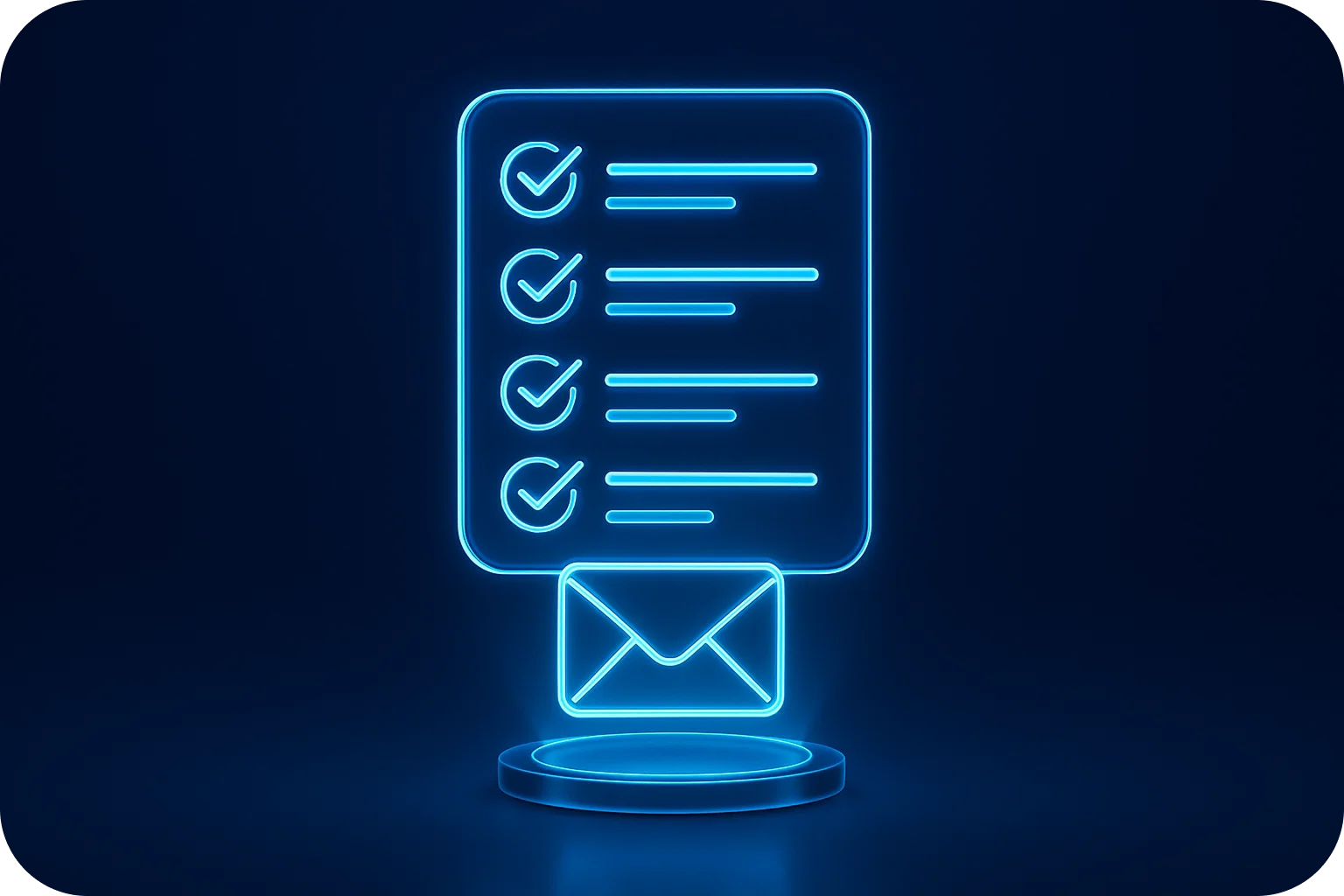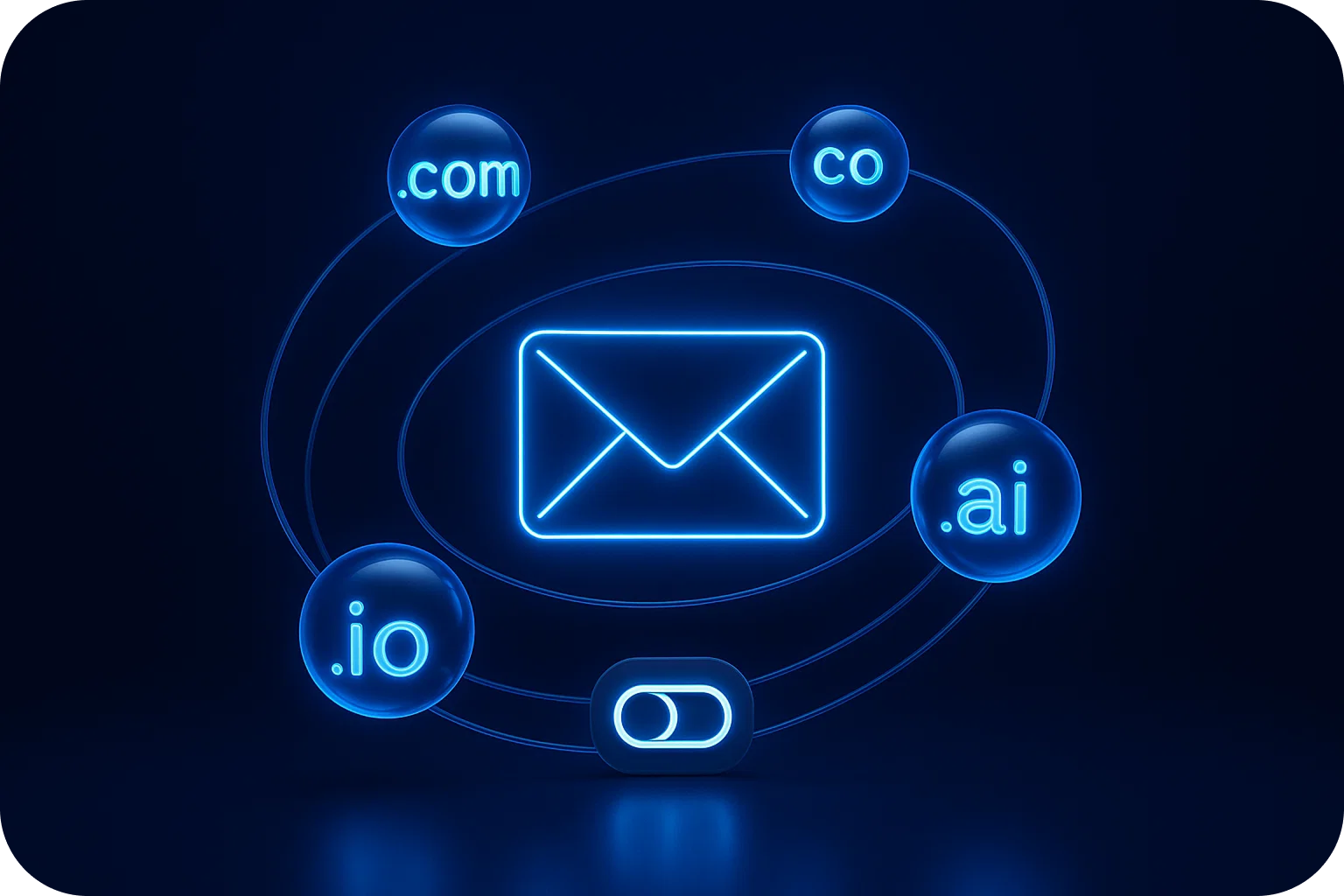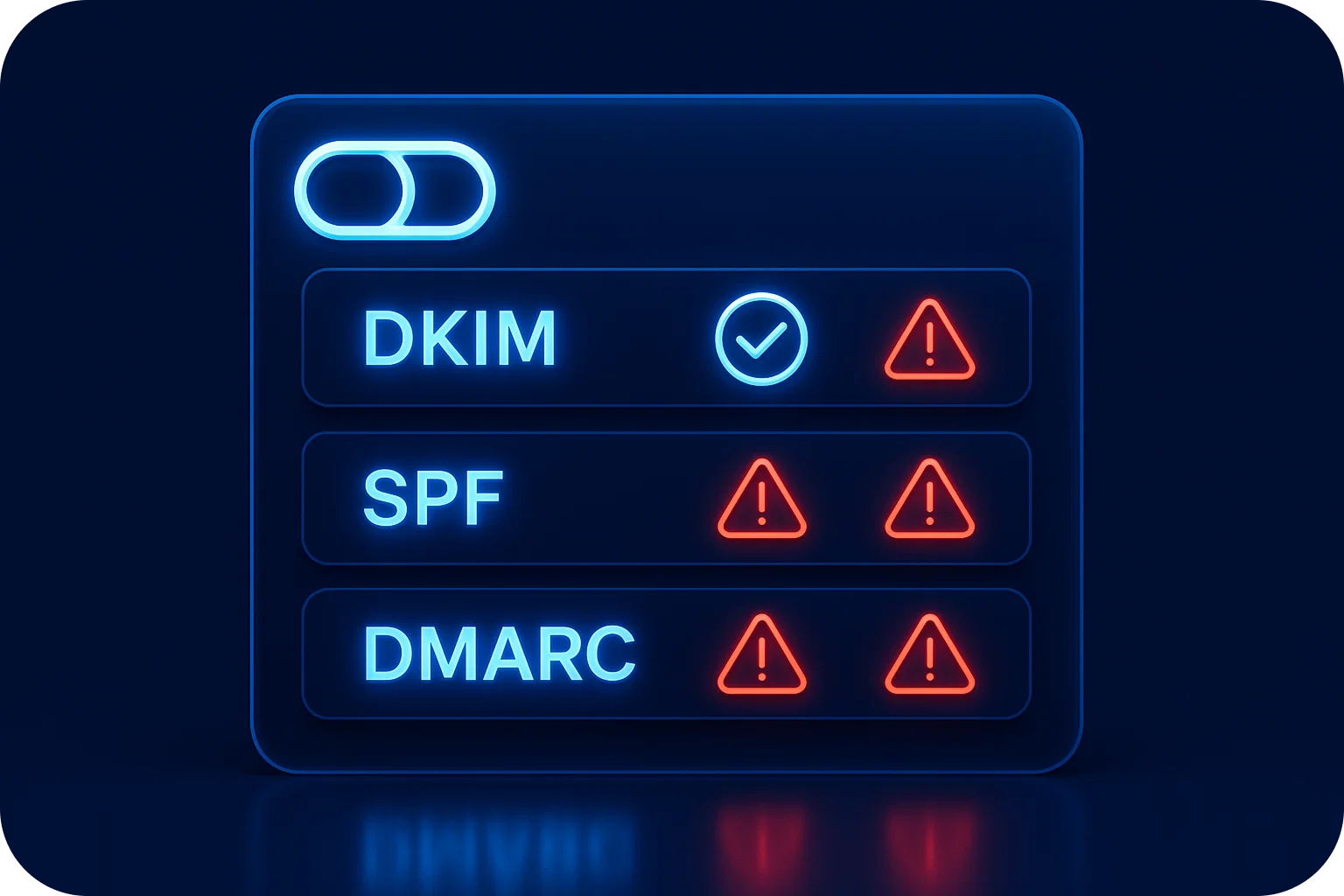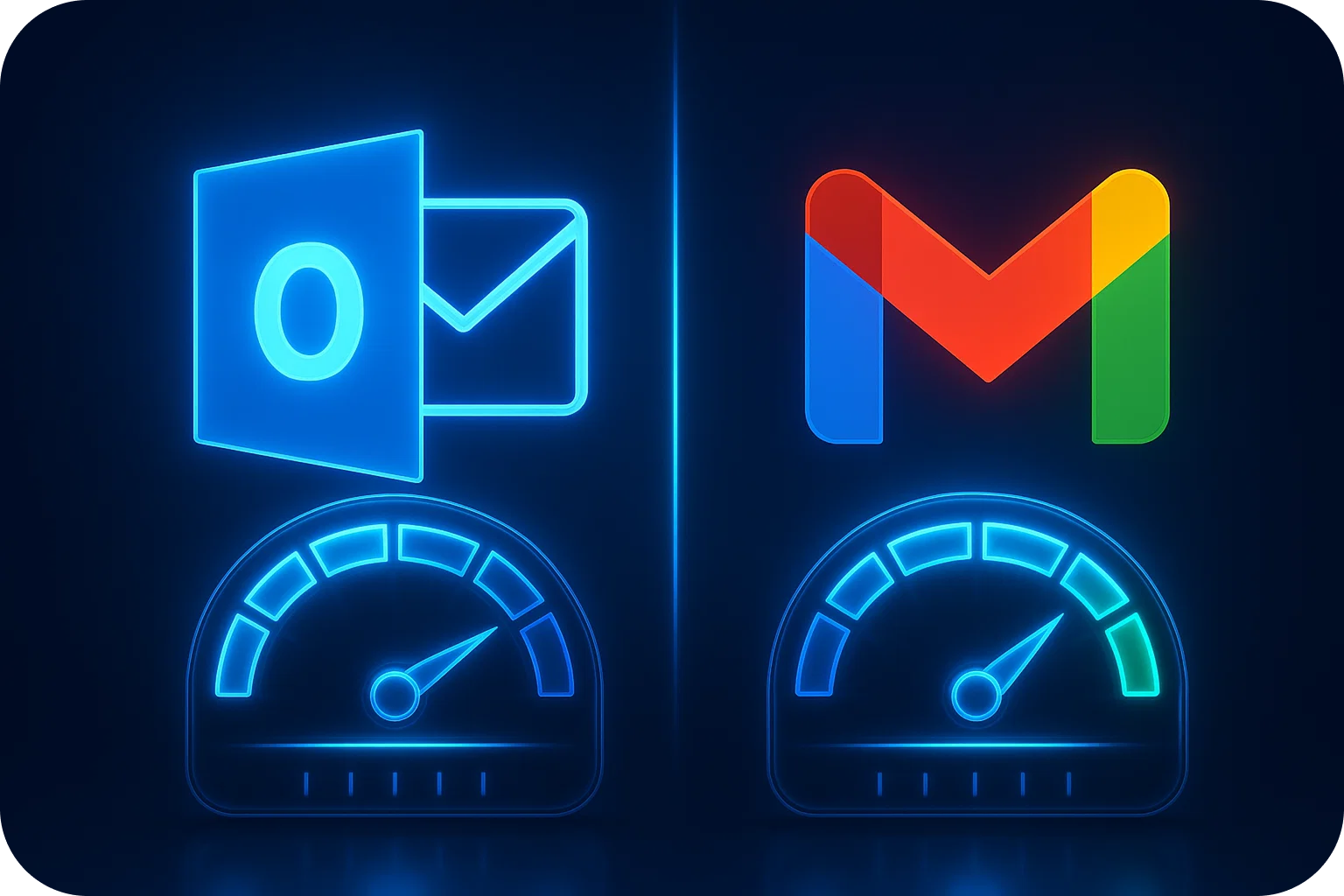5 Signs Your Cold Email Infrastructure Is Holding You Back
.png)
Your cold email campaigns are ready to launch. You've crafted compelling subject lines, personalized your outreach, and built a solid prospect list. But despite your best efforts, your open rates are dismal, responses are nonexistent, and your emails seem to vanish into the digital void.
The problem might not be your messaging; it could be your email infrastructure silently sabotaging your success.
Most sales teams and startups focus heavily on crafting the perfect email copy while overlooking the technical foundation that determines whether their messages ever reach their intended recipients. A weak email infrastructure can cripple even the most brilliant outreach campaigns, costing you leads, revenue, and growth opportunities.
Here are five critical warning signs that your cold email infrastructure is holding you back and what you can do about it.
1. Your Emails Are Landing in Spam Folders (And You Don't Even Know It)
The Hidden Problem: You're sending hundreds of cold emails weekly, but your open rates hover around 5-10%. Your prospects aren't ignoring you, they're simply not seeing your emails because they're automatically filtered into spam folders.
Why This Happens:
- Poor domain reputation from previous sending practices
- Inadequate email authentication (missing SPF, DKIM, or DMARC records)
- Sending from a brand-new domain without proper warm-up
- Using shared IP addresses with a poor sending history
- Triggering spam filters with certain words, formatting, or sending patterns
The Real Cost: If 70% of your emails land in spam (industry average for poorly configured setups), you're essentially throwing away 70% of your outreach investment. For a startup sending 1,000 emails monthly, that's 700 missed opportunities to connect with potential customers.
How to Identify This Issue:
- Use tools like Mail-Tester or GlockApps to test your spam score
- Monitor your sender reputation through Google Postmaster Tools
- Track delivery rates, not just open rates
- Ask a few prospects directly if they received your email
2. You're Hitting Volume Limits That Cap Your Growth
The Scaling Nightmare: Your outreach is working, so you want to scale up. But suddenly, your email provider starts blocking messages, your account gets suspended, or your deliverability plummets when you increase volume.
Common Volume Constraints:
- Gmail's 500 emails per day limit for regular accounts
- Outlook's restrictive sending limits for new accounts
- Shared hosting providers blocking bulk email sending
- Email service providers flagging sudden volume increases
The Growth Bottleneck: Most successful companies need to send thousands of cold emails monthly to maintain their sales pipeline. If your infrastructure can't handle this volume while maintaining deliverability, you're artificially capping your growth potential.
Signs You're Hitting Volume Limits:
- Email bounces increase when you send more messages
- Your email provider sends warning notifications
- Deliverability drops significantly with higher volumes
- You're manually managing multiple email accounts to work around limits
3. Your Domain Reputation Is Damaged (And Recovery Takes Months)
The Reputation Crisis: You've been sending cold emails from your main business domain, and now even your important business communications, customer support emails, invoices, and transactional messages are being flagged as spam.
How Domain Reputation Gets Damaged:
- High bounce rates from outdated prospect lists
- Recipients marking your emails as spam
- Sending too many emails too quickly from a new domain
- Poor list hygiene and targeting
- Inconsistent sending patterns
The Business Impact: A damaged domain reputation doesn't just affect your cold outreach; it can harm all email communications from your business. Customer emails might not reach their inbox, password reset emails could be blocked, and important business communications may be filtered.
Warning Signs of Domain Reputation Issues:
- Even transactional emails are being marked as spam
- Your domain appears on blacklists
- Email authentication tools show poor reputation scores
- Customers report not receiving important business emails
4. You're Spending More Time on Technical Setup Than Actual Outreach
The Time Drain: Your sales team spends hours each week managing email accounts, configuring DNS settings, troubleshooting deliverability issues, and dealing with technical problems instead of focusing on what they do best, selling.
Common Time-Wasting Activities:
- Manually creating and warming up new email accounts
- Configuring SPF, DKIM, and DMARC records for multiple domains
- Troubleshooting why emails aren't being delivered
- Managing multiple email providers and accounts
- Researching and implementing deliverability best practices
The Opportunity Cost: Every hour your sales team spends on technical infrastructure is an hour not spent on prospecting, relationship building, or closing deals. For a sales team with an average deal size of $5,000, even one lost deal per month due to infrastructure management time represents $60,000 in annual lost revenue.
Calculate Your Time Cost:
- Track how many hours per week your team spends on email infrastructure
- Multiply by your team's hourly rate
- Consider the opportunity cost of deals not pursued due to time constraints
5. Your Email Infrastructure Can't Integrate with Your Growth Tools
The Integration Gap: You want to use advanced outreach tools, CRM integrations, or AI-powered sales development platforms, but your current email setup doesn't support the APIs, automation, or scale these tools require.
Common Integration Challenges:
- Outreach tools can't connect to your email accounts reliably
- Limited API access for automation and scaling
- Inability to manage multiple domains and accounts centrally
- Poor integration with CRM systems for tracking and attribution
- Lack of advanced analytics and deliverability monitoring
The Competitive Disadvantage: While your competitors leverage sophisticated sales automation, AI-powered personalization, and advanced analytics, you're stuck with manual processes and limited functionality. This puts you at a significant disadvantage in speed, efficiency, and effectiveness.
Signs of Integration Problems:
- Your outreach tools frequently disconnect or fail to send
- You can't get detailed analytics on email performance
- Manual data entry is required between systems
- You're unable to implement advanced automation workflows
The Solution: Professional Cold Email Infrastructure
Recognizing these warning signs is the first step, but what's the solution? Professional cold email infrastructure addresses all these challenges systematically:
Key Components of Robust Email Infrastructure:
- Multiple Provider Support: Access to Google Workspace, Microsoft 365, and dedicated IP options
- Automated Setup: Professional DNS configuration and email authentication
- Scalable Architecture: Infrastructure that grows with your business needs
- Deliverability Optimization: Built-in best practices and monitoring
- Integration Capabilities: APIs and connections to popular outreach tools
Expected Results with Professional Infrastructure:
- Deliverability rates of 96-98% across major email providers
- Ability to scale to 100x your current email volume
- 10-minute setup time instead of hours or days
- Integration with leading outreach and CRM platforms
- Enterprise-grade security and compliance
Taking Action: Your Next Steps
If you've identified one or more of these warning signs in your current setup, it's time to take action. Here's how to move forward:
Immediate Assessment:
- Test your current email deliverability using professional tools
- Calculate the time and opportunity costs of your current infrastructure
- Evaluate your growth plans and volume requirements
- Assess your integration needs with existing and planned tools
Infrastructure Upgrade Planning:
- Research professional cold email infrastructure providers
- Compare features, pricing, and integration capabilities
- Plan your migration strategy to minimize disruption
- Set up proper tracking and monitoring from day one
Long-term Success Factors:
- Implement proper list hygiene and targeting practices
- Follow email warm-up protocols for new accounts
- Monitor deliverability metrics continuously
- Stay updated on email provider policy changes
- Maintain a separate infrastructure for cold outreach and business communications
Don't Let Infrastructure Limit Your Growth
Your cold email infrastructure should be an invisible foundation that enables your growth, not a constant source of problems and limitations. The five warning signs outlined above are more than just technical inconveniences; they're growth barriers that can significantly impact your business success.
By addressing these infrastructure challenges proactively, you can:
- Dramatically improve your email deliverability and response rates
- Scale your outreach efforts without hitting technical limitations
- Free up your sales team to focus on selling instead of technical troubleshooting
- Leverage advanced tools and automation for competitive advantage
- Protect your business communications and brand reputation
The question isn't whether you can afford to upgrade your email infrastructure; it's whether you can afford not to. Every day you delay addressing these issues is another day of missed opportunities, wasted resources, and limited growth potential.
Take the time to honestly assess your current setup against these five warning signs. If you're experiencing any of these issues, it's time to invest in professional cold email infrastructure that can support your growth ambitions and help you achieve the results your business deserves.
More articles
Get started now




%201.png)





